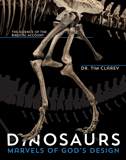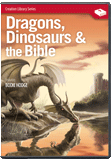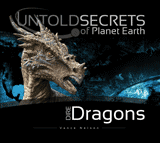
Supposed Confirmation of Meteorite Impact that Killed Dinosaurs
“Confirmation” that a meteorite impact killed the dinosaurs has come in the form of panel consensus at the recent Lunar and Planetary Science Conference.
News Source
- BBC News: “Dinosaur Extinction Link to Crater Confirmed”
The 41 members of the panel coauthored a new analysis in Science of evidence related to the Chicxulub impact crater. That crater, stretching some 112 miles (180 km) wide in Mexico’s Yucatan Peninsula, has long been considered the leading evidence of an impact that drove the dinosaurs extinct. Judging by the characteristics of the impact crater, scientists estimate that the space rock was 6 to 9 miles (10 to 15 km) wide, struck the earth “20 times faster than a speeding bullet,” and released over a billion times more explosive power than the atomic weapons used in World War 2.
The impact would have caused immediate local devastation, including fires, earthquakes, landslides, and tsunamis, followed by global devastation from debris blown into the atmosphere. The resulting “global winter” would have devastated many life-forms, including dinosaurs.
The scientists reviewed previous research concerning the impact crater and the K–T boundary in the fossil record, which is said to coincide with dinosaurs’ extinction and contains chemical signatures associated with space impacts. Although the chemical signatures are also associated with volcanic activity, the panel concluded that the only volcanic events conjectured to have caused the K–T extinction occurred 500,000 years too early and would not have released enough debris for a global winter.
Biblical creationists interpret the fossil record as largely having been laid down during the global Flood (with the exception of some pre-Flood and post-Flood sediments), which implies that the K–T boundary would not mark dinosaurs’ extinction; although the Flood killed and fossilized a great many dinosaurs, Noah would have taken representatives on the Ark. As for what did cause the disappearance of the dinosaurs, see the links below.
As for the Chicxulub crater, it presumably did strike during the catastrophic Flood year, which we know because of the chemical signature it left in Flood-era sediments. However, whether it is responsible for all such chemical signature in the K–T boundary is a matter of debate. Most creationists believe there likely were a number of space impacts during the Flood (perhaps including >one responsible for a crater in the Congo1), along with substantial volcanic and tectonic activity—all of which contributed to such chemical signatures.
Further Reading
- Dinosaur Killer
- Will This Idea Survive?
- The Extinction of the Dinosaurs
- What Really Happened to the Dinosaurs?
- Why Don’t We Find Human & Dinosaur Fossils Together?
- Get Answers: Dinosaurs, The Flood, Fossils, Geology, Noah’s Ark, Plate Tectonics, Age of the Earth
For More Information: Get Answers
Remember, if you see a news story that might merit some attention, let us know about it! (Note: if the story originates from the Associated Press, FOX News, MSNBC, the New York Times, or another major national media outlet, we will most likely have already heard about it.) And thanks to all of our readers who have submitted great news tips to us. If you didn’t catch all the latest News to Know, why not take a look to see what you’ve missed?
(Please note that links will take you directly to the source. Answers in Genesis is not responsible for content on the websites to which we refer. For more information, please see our Privacy Policy.)
Footnotes
- Paul Rincon, “DR Congo Ring May be Giant ‘Impact Crater’,” BBC News, March 10, 2010, http://news.bbc.co.uk/2/hi/science/nature/8526093.stm.
Recommended Resources

Answers in Genesis is an apologetics ministry, dedicated to helping Christians defend their faith and proclaim the good news of Jesus Christ.
- Customer Service 800.778.3390
- © 2024 Answers in Genesis





